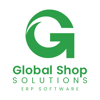On-Premise ERP
On-Premise ERP systems can boost productivity and efficiencies for companies, plus ensure that their IT operations and uptime is within their control.
At ERP Research we provide independent advice and analysis for top manufacturing ERP systems, helping you find the best software, faster.
Best On-Premise ERP Software:
Small and medium sized (SME) manufacturing firms need ERP systems which are cost effective, fast to implement and scalable.
Many manufacturing organizations have adopted ERP solutions such as these to handle their growth efficiently:
Infor CloudSuite Industrial (Syteline)
Infor CSI offers both On-Premise ERP and Cloud ERP options and is well suited to manufacturing, distribution and other product centric companies.
SAP Business One
SAP Business One is an On-Premise ERP software, also available in the Cloud. B1 On-Premise ERP is very customizable and is used by small and medium-sized businesses around the world.
Odoo
Odoo is an open source ERP platform which has been used by small and fast growing manufacturing organizations looking to unify their processes from shop floor to manufacturing execution and beyond.
SYSPRO ERP
SYSPRO is a popular ERP solution for small business manufacturers in multiple industries, with a variety of process and discrete manufacturing capabilities.
Epicor
Epicor is a powerful Cloud based ERP system which is used by SMB and small business manufacturers around the world and provides deep manufacturing ERP capabilities.
Microsoft Dynamics Business Central
Microsoft Dynamics 365 Business Central is used by SMB & SME manufacturers to cater for industry specific manufacturing industry challenges and requirements.
QAD Systems
QAD Systems is a popular ERP solution for small business manufacturers in multiple industries, with a variety of process and discrete manufacturing capabilities.
Acumatica
Acumatica is a powerful Cloud based ERP system which is used by SMB and small business manufacturers around the world and provides deep manufacturing ERP capabilities.
Global Shop Solutions
Global Shop Solutions is an ERP specificially designed for small and medium sized manufacturing companies and provides flexibility and deep production capabilities at a low cost - both On-Premise and in the Cloud.
SAP S/4 HANA
SAP S/4 HANA for many is the gold standard ERP solution for large manufacturers. It provides deep industry capabilities for manufacturing and offers the largest customer base of global manufacturing organizations.
On-Premise ERP FAQ
What is On-Premise ERP software?
On-premise ERP software refers to an enterprise resource planning (ERP) system that is installed and runs on the premises of an organization, rather than being hosted in the cloud or on a remote server. This means that the ERP software is installed and managed locally, on the organization's own servers and hardware.
On-premise ERP software provides businesses with complete control over their ERP system and data, allowing for greater customization, flexibility, and security. Organizations can tailor the software to meet their specific needs and requirements, and they have full access to their data and can manage it in-house.
However, on-premise ERP software can also require significant upfront costs for hardware, software, and infrastructure, as well as ongoing maintenance and support. It may also require IT staff with specialized skills to manage and maintain the software and infrastructure. In addition, on-premise ERP software may not be as easily accessible from remote locations or on mobile devices as cloud-based ERP systems.
How much does On-Premise ERP cost?
The cost of on-premise ERP software can vary widely depending on a number of factors, including the size of the organization, the specific features and modules required, and the complexity of the implementation.
Some of the costs associated with on-premise ERP software can include:
-
License fees: The initial cost of acquiring the software license, which can range from tens of thousands of dollars to hundreds of thousands of dollars or more, depending on the vendor and the scope of the implementation.
-
Hardware and infrastructure: The cost of purchasing and installing the necessary hardware, such as servers, storage, and networking equipment, as well as any other infrastructure components required to support the ERP system.
-
Implementation and customization: The cost of hiring consultants, developers, and other professionals to implement and customize the ERP software to meet the organization's specific needs.
-
Training: The cost of providing training for employees to learn how to use the new system effectively.
-
Ongoing maintenance and support: The cost of ongoing maintenance, updates, and support for the ERP system, which can include expenses such as software patches, bug fixes, and technical support.
Given the above factors, the cost of on-premise ERP software can vary widely, ranging from tens of thousands of dollars to several million dollars or more, depending on the size and complexity of the implementation. It is important for organizations to carefully evaluate their needs and budget before investing in an on-premise ERP solution.
What is the best On-Premise ERP?
There is no single "best" on-premise ERP solution that would work for all organizations, as different businesses have different requirements, budgets, and priorities. However, there are several leading on-premise ERP solutions available in the market, including:
-
SAP ERP: This is one of the most popular on-premise ERP solutions, designed to manage and integrate core business functions across various departments, including finance, procurement, manufacturing, sales, and distribution.
-
Oracle ERP Cloud: Oracle offers a comprehensive suite of on-premise ERP solutions that cover a wide range of business functions, including financial management, procurement, project management, supply chain management, and more.
-
Microsoft Dynamics 365: This is a suite of cloud-based and on-premise ERP solutions designed to help businesses streamline and automate their operations, from finance and supply chain management to sales and marketing.
-
Infor ERP: Infor offers a range of on-premise ERP solutions for different industries, including manufacturing, distribution, healthcare, and more.
-
Sage ERP: Sage offers a range of on-premise ERP solutions for small and mid-sized businesses, including financial management, supply chain management, production management, and more.
When selecting an on-premise ERP solution, it is important to consider factors such as the vendor's reputation and support, the scalability and flexibility of the software, the specific features and modules required by the organization, and the total cost of ownership, including upfront and ongoing costs. It is recommended that businesses evaluate multiple vendors and solutions before making a decision, and to involve key stakeholders and users in the selection process.
What are the advantages and disadvantages of On-Premise ERP?
On-premise ERP software has several advantages and disadvantages that organizations should consider when deciding whether to implement this type of solution.
Advantages of On-Premise ERP Software:
-
Greater control and security: With on-premise ERP software, the organization has full control over the software and data, which can help to enhance security and privacy. It also allows the organization to tailor the system to meet its specific needs.
-
No ongoing subscription fees: Unlike cloud-based ERP solutions, which typically require ongoing subscription fees, on-premise ERP software only requires an upfront investment in the software and hardware, which can result in lower long-term costs.
-
Better integration with existing systems: On-premise ERP software can be more easily integrated with existing on-premise systems, such as legacy systems or other software that is not cloud-based.
-
Customization and flexibility: On-premise ERP software can be more easily customized and tailored to meet the specific needs of the organization, which can result in a more efficient and effective system.
Disadvantages of On-Premise ERP Software:
-
Higher upfront costs: On-premise ERP software can require significant upfront costs for software licenses, hardware, and infrastructure, which can be a barrier to entry for smaller organizations.
-
Ongoing maintenance and support: On-premise ERP software requires ongoing maintenance and support, which can be costly and time-consuming for the organization.
-
Limited accessibility: On-premise ERP software can be limited in terms of accessibility, as it typically requires the user to be on-site or using a virtual private network (VPN) to access the system remotely.
-
Limited scalability: On-premise ERP software can be more difficult to scale and expand than cloud-based ERP solutions, as it typically requires additional hardware and infrastructure to be added to support growth.
What is the best ERP for manufacturing in 2021?
We review the best ERP software for manufacturing? We compare and rank the best ERP software for manufacturers in 2021 including SAP Business One, Netsuite, Infor & more.
ERP Requirements Gathering (RFI, RFP) Template Excel
Start your ERP evaluation process with our RFI & RFP Excel template for the engineering industry.
ERP Project Budget Calculator Template
Calculate the costs of your manufacturing ERP project with our prebuilt budget calculator.










.png?width=278&name=sap-s-4hana-logo%20(2).png)

